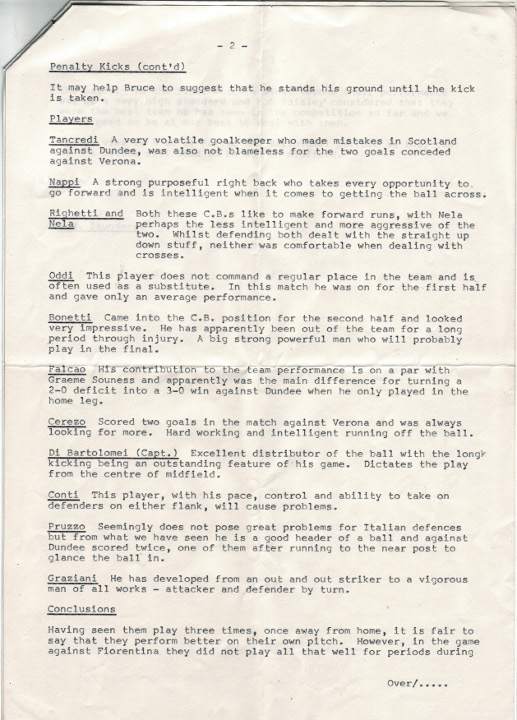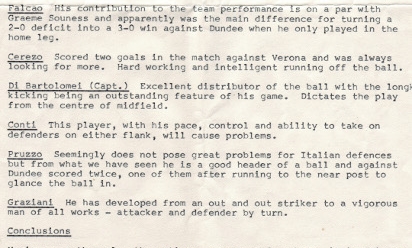Joe's dossier on how to beat Roma in Rome
They may not have had the vast array of technical equipment and resources available to the modern day scouting systems, but when Liverpool travelled to Rome for the 1984 European Cup final, they knew their opponents, AS Roma, inside out.

Joe Fagan's men entered the bear-pit that was the Stadio Olimpico 30 years ago today to face the wrath of a home crowd baying for blood and desperate to halt the Reds' march to a fourth triumph in the tournament.
Liverpool succeeded against a ferocious backdrop to secure the gleaming trophy on penalties on a night that would be remembered for the sheer aggression of Graeme Souness, the spaghetti-legged tactics of Bruce Grobbelaar and Alan Kennedy's winning strike in the shoot-out.
Roma had beaten Dundee United in the semi-finals of the tournament - and Fagan's spies were there watching the Italians, scouring their every move in order to unearth any crucial pointers ahead of the clash.
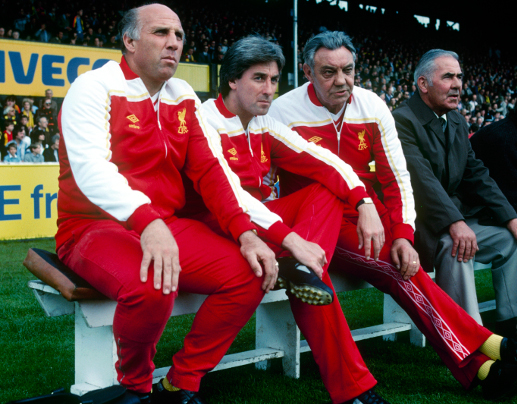
On May 13, Roma beat Verona 3-2 on the final day of their domestic campaign to secure a second-place finish in Serie A - and in attendance was Tom Saunders [above, far right], who had been charged by Fagan to run the rule over the Reds' opponents.
Saunders, who oversaw the development of more or less every player from 1970 to 1986, would often be dispatched on 'spying' trips around Europe, in order to help the red machine maintain its stronghold over the continent.
Below is a transcript of his findings, courtesy of the club's official museum, including profiles of each potential opponent, general tactical observations and a few pointers on how to act should a penalty shoot-out materialise for the first time in the history of the European Cup final...
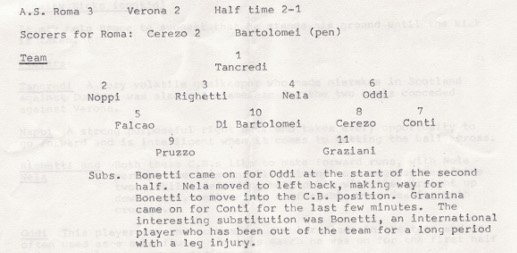
Pattern of Play
As we observed in previous matches, they do not have any rigid formation. The defenders have complete freedom to go forward when they choose to do so, but they always keep at least three defenders back and seldom use the offside trap. The ability of players to make strong runs from positions behind the ball was a feature of their play and when they get forward they are looking to play quick one-twos on the edge of the eighteen-yard area.
Di Bartolomei runs the midfield and, without getting involved in as much movement as other players, his excellent distribution more than compensates. The quick change of direction with the long ball out to Conti on the left causes lots of problems. Falcao, who we were seeing for the first time, displayed brilliant ball control, never allowing opponents to challenge him, he sprayed the ball about to good effect.
Conti is the most aggressive attacking player and is prepared to shoot from any position.
Restarts
Conti took the corner-kicks from both sides, mainly inswingers, but they are looking to take quick short corners. Nela and Righetti take up positions in the eighteen-yard area, but the only player to threaten the goalkeeper was Pruzzo.
Free-kicks in other areas were taken quickly. Di Bartolomei takes most of the direct free-kicks, with Conti acting as the decoy.

Penalty Kicks
Di Bartolomei, who is a very good striker of the ball, takes up position only a yard away from it and waits for the goalkeeper to make his move first. Against Dundee he struck a powerful shot to the goalkeeper's left and in this match he scored with a similar right-footed shot to the goalkeeper's left, the ball travelling about three feet from the ground. It may help Bruce to suggest that he stands his ground until the kick his taken.
Players
Tancredi
A very volatile goalkeeper who made mistakes in Scotland against Dundee, was also not blameless for the two goals conceded against Verona.
Nappi
A strong purposeful right-back who takes every opportunity to go forward and is intelligent when it comes to getting the ball across.
Righetti and Nela
Both these centre-backs like to make forward runs, with Nela perhaps the less intelligent and more aggressive of the two. Whilst defending, both dealt with the straight up-down stuff, neither was comfortable when dealing with crosses.
Oddi
This player does not command a regular place in the team and is often used as a substitute. In this match he was on for the first half and gave only an average performance.
Bonetti
Came into the CB position for the second half and looked very impressive. He has apparently been out of the team for a long period through injury. A big strong powerful man who will probably play in the final.

Falcao
His contribution to the team performance is on a par with Graeme Souness and apparently Falcao [above] was the main difference for turning a 2-0 deficit into a 3-0 win against Dundee when he only played in the home leg.
Cerezo
Scored two goals in the match against Verona and was always looking for more. Hard working and intelligent running off the ball.
Di Bartolomei (Capt)
Excellent distributor of the ball with the long kicking being an outstanding feature of his game. Di Bartolomei (below) Dictates the play from the centre of midfield.
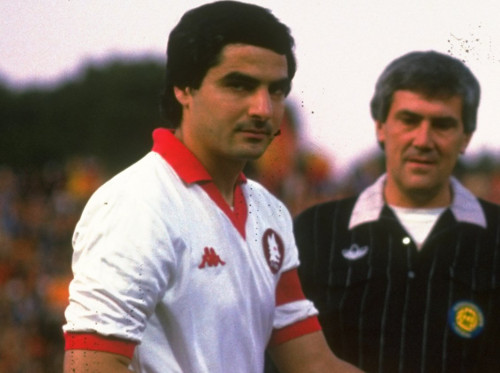
Conti
This player, with his pace, control, and ability to take on defenders on either flank, will cause problems.
Pruzzo
Seemingly does not pose great problems for Italian defences but from what we've seen he is a good header of the ball and against Dundee scored twice, one of them after running to the near post to glance the ball in.
Graziani
He has developed from an out and out striker to a vigorous man of all works - attacker and defender by turn.
Conclusions
Having seen them play three times, once away from home, it is fair to say that they perform better on their own pitch. However, in the game against Fiorentina they did not play the ball all that well for periods during the match. In the final match against Verona their performance was of a very high standard and Bob Paisley considered that they were the best team he has seen in the competition so far and we shall need to be at our best to deal with them.
My own view is that if Falcao and Di Bartolomei perform as they can do, the battle will need to be won in midfield.
T.W. Saunders
